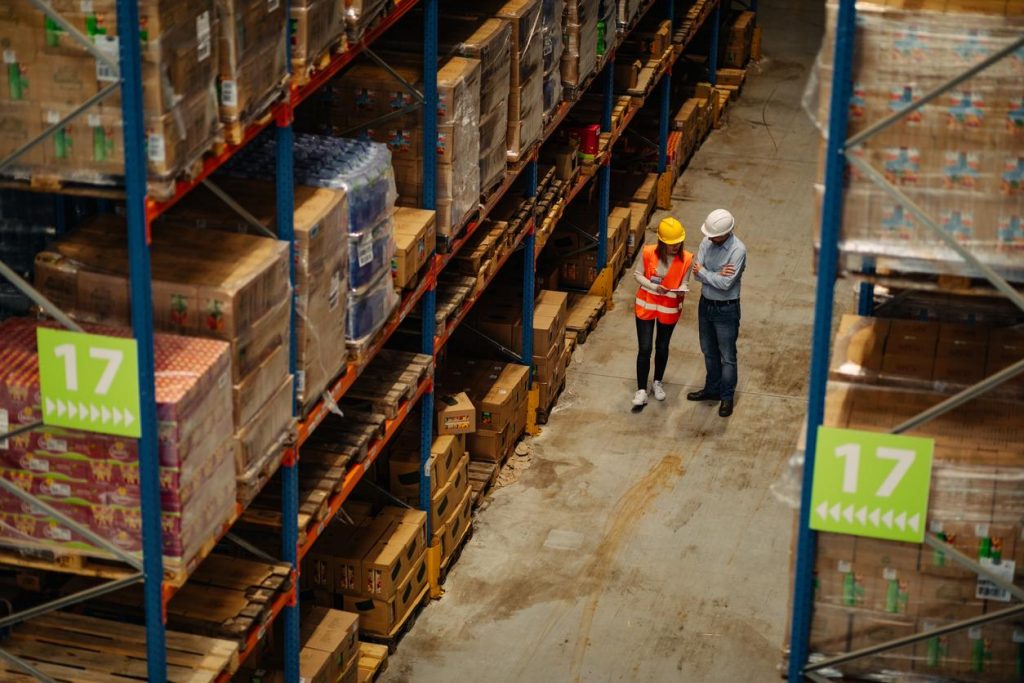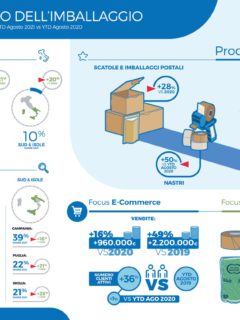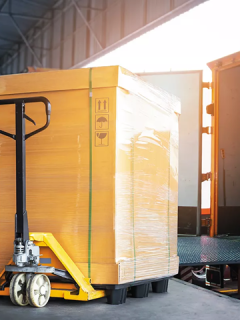Efficiency and optimised process management are key to business success. At the heart of every successful enterprise lies sound logistics management, a concept that becomes a necessity in a highly competitive business environment.
In today’s complex scenario, proper logistics management is what distinguishes leading companies from the rest of the competition. This integrated approach is not limited to moving goods from one point to another, but includesoptimising every step of the process, from production to delivery to the customer. The aim is to create a continuous, lean, efficient and sustainable flow. Good logistics management, in fact:
- reduces costs
- satisfies customers
- creates a resilient supply chainready to face any challenge.
In this article we will look in detail at several key aspects of logistics and supply chain, from inventory management and lead time calculation to picking strategy and the importance of the PDCA cycle in continuous improvement .
Let us now continue on this journey through the world of logistics and supply chain, where optimisation is the key to success.
Logistics Management for optimised process management
Logistics management is not just a fashionable term, but a necessity in a competitive business ecosystem. For leading companies, it is necessary to have an engineered logistics management. This integrated approach makes it possible to optimise the handling and storage of goods. And, it is not just about moving products, but ensuring that the complete process, from production to delivery to the customer, is lean, efficient and sustainable. Good logistics management can result in:
- reduced costs
- satisfied customers
- resilient supply chain.
Logistics management has undergone a radical transformation thanks totechnological innovation. The use of advanced digitisation solutions, such as the Internet of Things (IoT),artificial intelligence (AI) anddata analytics, has enabled real-time control of the supply chain. This means greater visibility and traceability of goods, reducing risks and enabling more informed decisions. Furthermore, the focus on sustainability has increased, with a focus on eco-friendly modes of transport and solutions to reduce environmental impact, thus contributing to an overall improvement of logistics management in companies.

Reverse logistics: what it is and how it works
Reverselogistics has become a key element for many companies . Whereas traditional logistics focuses on sending products to customers, reverse logistics deals with the reverse process: getting products back to the seller or manufacturer. This process can result from various reasons, such as:
- returns
- recycling
- disposal
- guarantee.
It may sound simple, the reality is that efficient reverse logistics management requires robust strategies to reduce costs and time while ensuring customer satisfaction.
Reverse logistics has become crucial forcorporate image and environmental sustainability. Companies are adopting more sophisticated and technologically advanced approaches to manage product returns, integrating digital solutions to improve traceability and material recovery. In addition, reverse logistics is becoming an opportunity for the valorisation of returned products, through reconditioning processes and putting them back on the market, thus helping to reduce waste and meet the expectations of an increasingly sustainability-orientedcustomer base. Its efficient management represents a strategic lever for business success.
Warehouse stocks: how to calculate and optimise them
Inventories represent a challenge for many companies. Excess stock can result in:
- wasted storage space
- blocked resources
- decreased production.
That is why it is essential to know how to calculate these inventories accurately. But calculating is not enough. Once inventories areidentified, it is crucial to implement effective strategies to optimise them, while ensuring that they do not build up again in the future.
Hereis a concrete example of a strategy that can be implemented in online trade, but not only: an e-commerce company can use the analysis of historical sales data to implement a ‘Just-in-Time’ strategy for slow-moving products. This means that items are only replenished when there isactual demand. This makes it possible:
- minimise the risk of overstocking
- maximise warehouse space efficiency.
What is lead time?
Leadtime in logistics is the time between the receipt of an order and its actual delivery to the customer or intended destination point. This metric is crucial in business as it directlyinfluences delivery efficiency and customer satisfaction. Having a clear understanding and optimal management of lead time allows companies to reduce delays and costs while ensuring quality service.
Lead time involves several factors, but can be calculated with a basic formula that can be customised according to the specific stages of the relevant supply chain:
Lead time = delivery date – order date
Often, companies rely on specialised software to monitor and calculate lead time accurately.
Picking: the strategy for optimising costs
The pickingprocess is often underestimated, but it is actually one of the most expensive and complex components of logistics . It is the phase in which goods are taken from the warehouse to be prepared for shipment. This process, if not managed correctly, can lead to costly errors and delays in deliveries. But with the right strategies and technologies, picking can become not only more efficient, but also a competitive advantage.
Picking management is now characterised by the adoption of advanced technologies such as:
- voice picking
- artificial vision
- collaborative robots.
These innovations are greatly improving the accuracy and speed of picking, minimising errors and delays in deliveries. Inaddition, picking optimisation has become crucial to meet customers’ growing expectations of fast delivery times, thus helping to maintain a competitive advantage in the logistics industry.

PDCA cycle and the benefits for the supply chain
The PDCA cycle (Plan, Do, Check, Act) is a methodology that has revolutionised the way companies approach continuous improvement. Starting with planning, moving through action and finally with check and correction, the PDCA cycle offers a structured framework for proactively addressing and solving problems. By integrating this methodology into supply chain management, companies can anticipate challenges, reduce waste and optimise processes on a continuous basis.
Let us now look at an example of how a company can apply the PDCA methodology to optimise its delivery service.
- In the phase of planning (Plan), it analyses existing delivery routes and schedules.
- Subsequently, implements changes (Do)implement advanced tracking systems and optimise delivery routes.
- Then monitors results (Check) by measuring the punctuality and efficiency of deliveries
- Finally, makes continuous improvements (Act) such as the use of more efficient vehicles and staff training to ensure faster and more reliable deliveries.
RAJA integrated logistics and supply chain solutions
In an ever-changing industry like logistics and supply chain, having a reliable partner can make all the difference. Offering a complete range of solutions, equipment and machines, RAJA is theideal partner for companies of all sizes. From storage solutions and handling equipment to ergonomic workbenches and customised solutions, RAJA covers every aspect of logistics.
Logistics and the supply chain are dynamic and challenging sectors. We hope this reading has helped you gain a clearer view of the challenges and opportunities these sectors offer. With the right information and strategy, every company can turn its logistics into a real competitive advantage.
If you want to know more about optimising logistics processes, don’t miss our guide: Logistics 4.0 and Supply Chain Management: Methods for Optimising Lead Time and Inventory.














